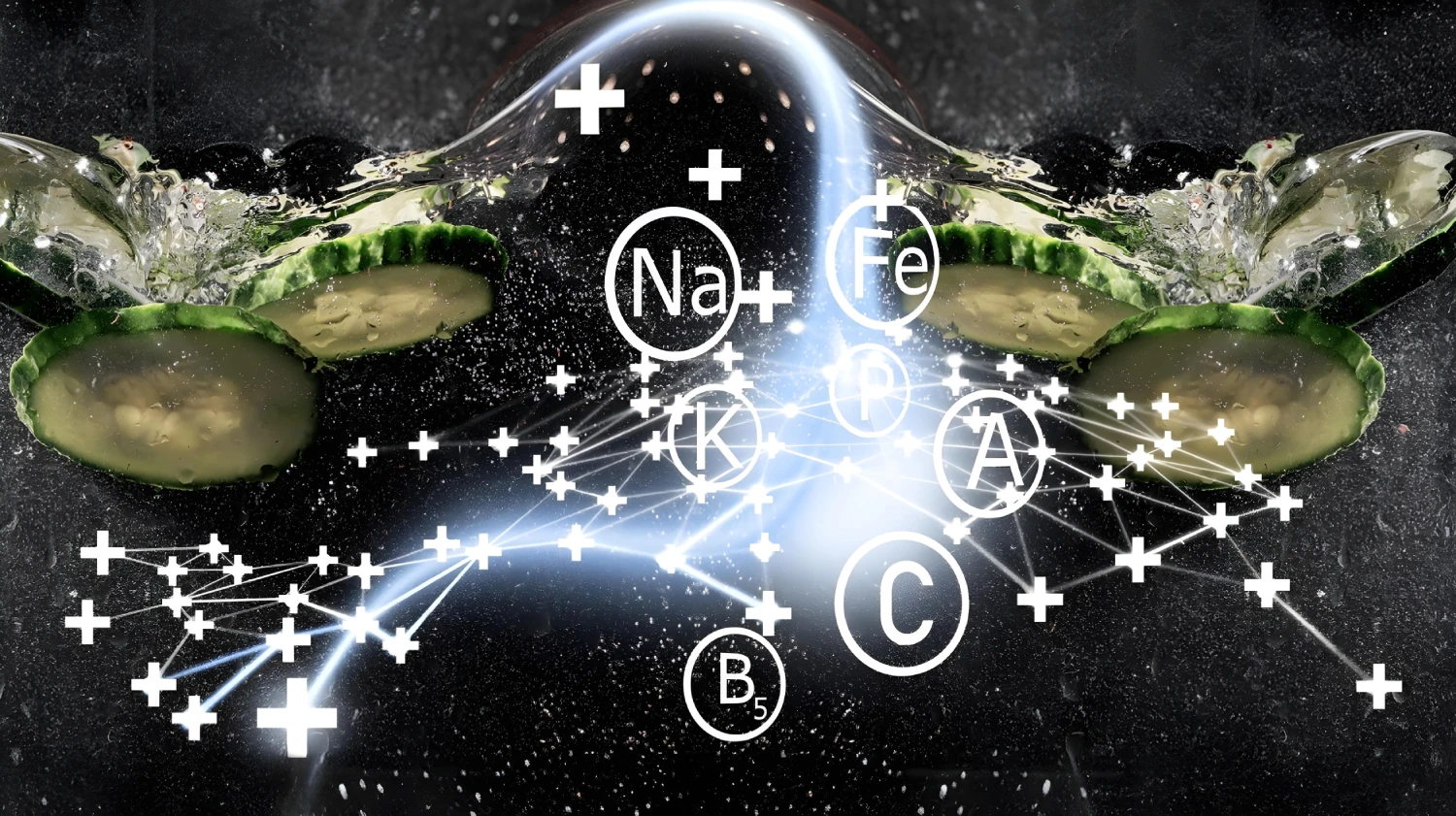Exploring the Revolutionary Potential of Ultrasound Technology in Food Processing
In-depth exploration of ultrasound technology in modern food processing methodology.
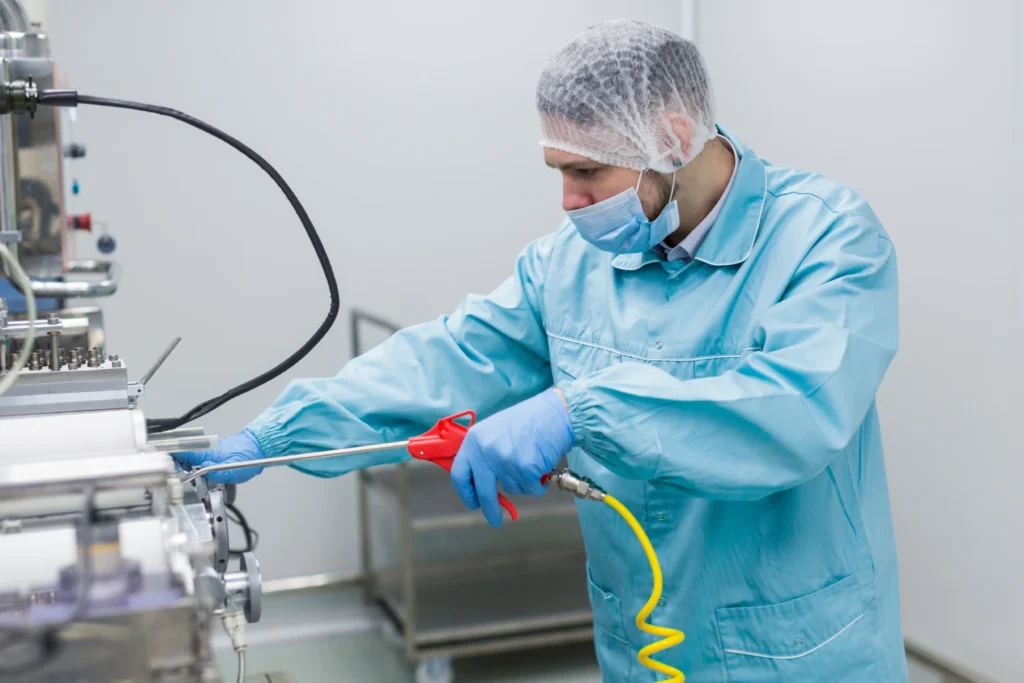
1. Introduction: The Ultrasonic Revolution in Food Innovation
The food processing industry stands on the verge of a technological revolution, with ultrasound technology emerging as a disruptive advancement that transforms traditional manufacturing methods. This revolutionary approach harnesses high-frequency acoustic waves to achieve processing objectives that were previously impossible or economically unfeasible using conventional methods.
Modern food manufacturers face unprecedented challenges in meeting consumer demand for high-quality, minimally processed foods while maintaining operational efficiency and sustainability standards. Traditional processing methods often fall short of these evolving requirements, creating a compelling need for innovative solutions that can deliver superior results without compromising product integrity.
What makes ultrasonic technology revolutionary?
Ultrasonic technology represents a paradigm shift from energy-intensive thermal processing to precision-controlled, non-thermal food processing alternatives. This transformative potential has captured the attention of food technologists and industry leaders seeking innovative approaches to address complex processing challenges.
Key characteristics include:
- Acoustic frequencies ranging from 20 kHz to 10 MHz (megahertz).
- Controlled cavitation effects that modify food structure at the molecular level.
- Enhanced extraction processes without thermal damage or chemical degradation.
- Improved product quality while maintaining nutritional integrity, bioactive compounds, microbial inhibition, enzyme inactivation, and homogenization.
- Versatile applications across diverse food categories and processing requirements.
2. Understanding Ultrasound Technology: The Science Behind the Revolution
How do ultrasonic waves work in food processing?
The fundamental principles underlying ultrasonic food processing rest on controlled high-frequency sound waves that exceed human auditory perception. These acoustic waves propagate through food matrices, creating alternating compression and rarefaction cycles that generate microscopic cavitation bubbles. This phenomenon represents a sophisticated approach to food modification that operates at the cellular and molecular levels.
The cavitation phenomenon represents the cornerstone of ultrasonic processing effectiveness because it generates mechanical forces necessary for food modification without thermal damage. When these microscopic bubbles collapse, they release tremendous localized energy densities, creating intense pressure waves and micro-jets that disrupt cellular structures and enhance mass transfer without elevated temperatures. This precise energy delivery mechanism enables targeted processing effects while preserving heat-sensitive components.
Understanding the Physics of Ultrasound Technology
The acoustic energy transfer occurs through complex wave propagation patterns that vary depending on food composition, density, and structural characteristics. Different food matrices respond uniquely to ultrasonic treatment, requiring careful parameter optimization to achieve desired outcomes.
Key frequency ranges and their applications:
- Low-frequency ultrasound (20-100 kHz): Generates aggressive cavitation effects suitable for emulsification, cell disruption, texture modification, and significant microbial reduction.
- Medium-frequency ultrasound (100-500 kHz): Balanced approach for extraction, mild processing applications, enzyme inactivation, and moderate microbial control.
- Higher frequencies (500 kHz-10 MHz): Provide gentler conditions ideal for delicate extraction applications, quality assessment, and selective enzyme inactivation while maintaining product integrity.
3. Breaking Traditional Boundaries: Non-Thermal Processing Advantages
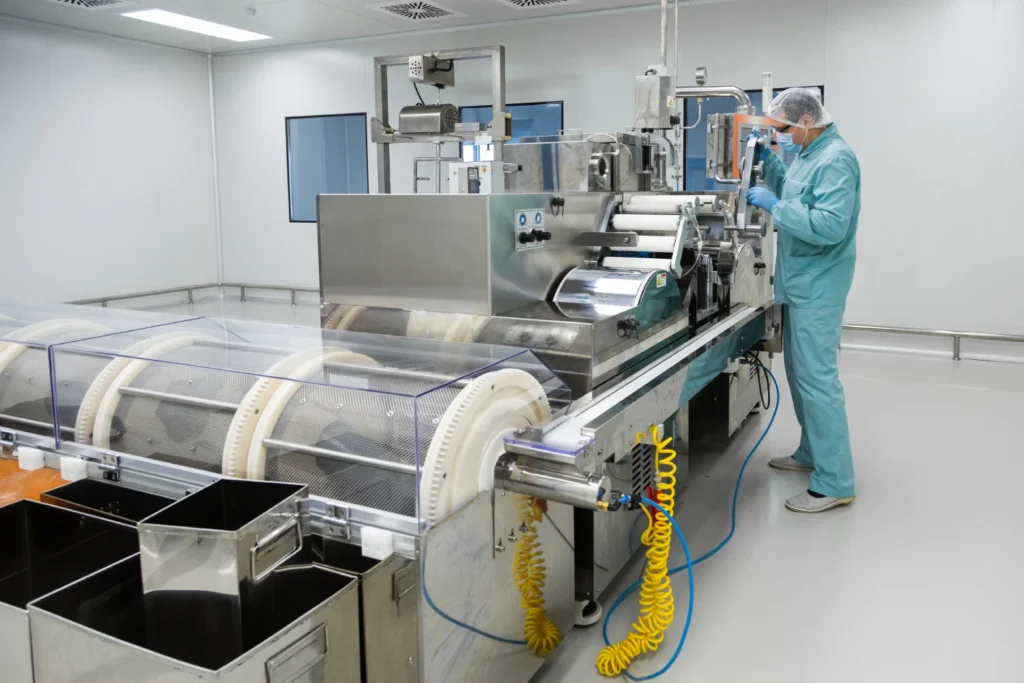
Why is non-thermal processing superior to conventional thermal methods?
Conventional thermal processing methods rely on high temperatures to achieve food safety and preservation goals. However, these methods often compromise nutritional value through heat-induced degradation reactions, destroy sensitive bioactive compounds, and alter sensory characteristics. Traditional thermal processing also requires significant energy inputs and extended processing times, resulting in higher operational costs and environmental impact.
Ultrasonic processing fundamentally challenges these limitations by achieving comparable safety and preservation results through mechanical energy transfer rather than thermal energy application. Unlike thermal methods that use heat to denature proteins and inactivate microorganisms, ultrasonic processing uses controlled cavitation to achieve similar outcomes while maintaining product integrity and nutritional value.
Key advantages of ultrasonic processing:
- Energy efficiency: Consumes less energy than conventional thermal methods, resulting in significant operational cost reductions.
- Nutritional preservation: Vitamins, antioxidants, phenolic compounds, and bioactive molecules remain intact during treatment.
- Temperature control: Processing occurs at ambient or mildly elevated temperatures, preventing thermal degradation.
- Processing time reduction: Dramatically shorter processing cycles, often reducing hours to minutes.
- Environmental benefits: Reduced energy consumption, lower water usage, decreased chemical additive requirements, and minimal waste generation.
- Clean-label support: Minimal waste streams and elimination of chemical preservatives, supporting consumer preferences for natural products.
- Quality consistency: Precise control over processing parameters ensures reproducible results and uniform product quality.
4. Processing Versatility: Applications and Extraction Across the Food Spectrum
The versatility of ultrasound technology manifests across virtually every food processing category, from liquid dairy products to solid meat applications. This broad applicability stems from the fundamental nature of acoustic energy transfer, which can be adapted to address diverse processing challenges through careful parameter optimization and system design.
What makes bioactive compound extraction so promising?
Bioactive compound extraction represents one of the most promising ultrasonic applications because it addresses growing demand for natural ingredients while overcoming limitations of traditional extraction methods. The nutraceutical and functional food markets continue to expand as consumers seek products with enhanced health benefits.
Traditional extraction methods face several limitations:
- Extended processing times requiring hours or days for complete extraction.
- Elevated temperatures that can degrade heat-sensitive compounds.
- Extensive use of organic solvents that may leave residual traces and raise safety concerns.
- High energy consumption and operational costs.
- Limited extraction efficiency and incomplete recovery of valuable compounds.
Ultrasonic extraction accelerates mass transfer through cavitation-induced cell wall disruption, enabling rapid, efficient extraction of antioxidants, essential oils, nutraceutical ingredients, and other valuable compounds. This technology enables manufacturers to recover previously inaccessible compounds while maintaining their biological activity and functional properties.
Impressive results in essential oil recovery:
Ultrasonic-assisted extraction significantly enhances essential oil recovery, achieving up to 64% higher yields compared to conventional steam distillation. This method also reduces extraction time from several hours to minutes by accelerating cell wall disruption and mass transfer. Moreover, it preserves thermolabile compounds, resulting in essential oils with improved aromatic profiles and higher concentrations of bioactive constituents.
Liquid Food Processing and Homogenization
How does ultrasonic homogenization differ from traditional high-pressure methods?
Traditional high-pressure homogenization systems force liquids through narrow orifices under extreme pressure (100-300 bar), generating significant heat and requiring substantial energy inputs. These systems also face challenges with equipment wear, maintenance costs, and limited control over particle size distribution.
Ultrasonic homogenization uses controlled cavitation to break down particles and create stable emulsions. This approach operates at ambient temperatures, provides superior control over particle size distribution, and requires significantly less energy input.
Ultrasonic homogenization advantages:
- Comparable particle size reduction and emulsion stability.
- Operations at ambient temperatures.
- Lower energy consumption.
- Superior processing control.
Beverage production benefits from ultrasonic processing through improved mixing efficiency, enhanced flavor distribution, and reduced processing times. Carbonated beverage manufacturers use ultrasonic processing during bottling and packaging to reduce or control foam formation, thereby improving filling efficiency and minimizing product loss.
Meat Processing and Enhancement
What benefits does ultrasonic processing offer for solid foods?
Ultrasonic technology offers transformative benefits for solid food processing by enabling precise structural modifications without compromising product integrity. The mechanical effects of cavitation can selectively target specific food matrix components, allowing for enhanced functionality. This technology proves particularly valuable for protein-rich foods where traditional processing methods often result in undesirable changes to appearance or nutritional content.
Meat processing applications:
- Improved marinade penetration: Cavitation creates microscopic channels that facilitate deeper marinade infiltration.
- Reduced microbial populations: Significant pathogen reduction without thermal damage.
- Accelerated natural aging processes: Reducing required time from weeks to hours through controlled protein modification.
Baked goods production benefits:
- Ultrasonic dough conditioning: Improves gluten development and dough elasticity.
- Enhanced gas retention capabilities: Better volume in finished products.
Higher-quality products: Extended shelf life and improved sensory characteristics.
5. Quality Enhancement: Transforming Food Texture and Preservation
How does ultrasound technology improve food quality parameters?
Ultrasound technology delivers measurable improvements across multiple quality parameters, establishing its value proposition beyond simple processing efficiency gains. Texture modification capabilities enable manufacturers to achieve desired mouthfeel characteristics that were previously difficult or impossible to attain through traditional processing methods.
The mechanism of texture enhancement involves controlled disruption of food matrix structures through cavitation effects. This disruption can be precisely controlled to achieve specific outcomes.
Texture enhancement mechanisms:
- Tenderization of tough protein structures through controlled proteolysis.
- Modification of starch gelatinization characteristics for improved functionality.
- Enhanced ingredient functionality and improved ingredient integration.
- Precise control over structural modifications without compromising integrity.
- Creation of novel textures not achievable through traditional processing.
Shelf-Life Extension Benefits
Shelf-life extension capabilities emerge from multiple synergistic mechanisms, including microbial inactivation, enzyme deactivation, and enhanced preservation compound distribution. Ultrasonic treatment can achieve significant log reductions in microbial populations while preserving product quality characteristics that might be compromised by equivalent thermal treatments.
The antimicrobial effects of ultrasonic processing result from cavitation-induced cell membrane disruption, which damages microbial cell walls and reduces viable populations. This mechanism proves particularly effective against vegetative bacteria, yeasts, and molds while requiring minimal processing time.
Why is nutritional value retention important?
Nutritional value retention represents a significant competitive advantage because consumers increasingly demand nutrient-dense foods with clear health benefits. Modern consumers scrutinize product labels and seek foods that provide functional benefits beyond basic nutrition.
Studies consistently demonstrate that ultrasonic processing preserves vitamin content, antioxidant activity, and other nutritional parameters better than thermal processing methods. This preservation capability enables manufacturers to maintain clean-label claims while achieving necessary safety and quality objectives.
6. Hygiene Revolution: Ultrasonic Cleaning in the Food Industry
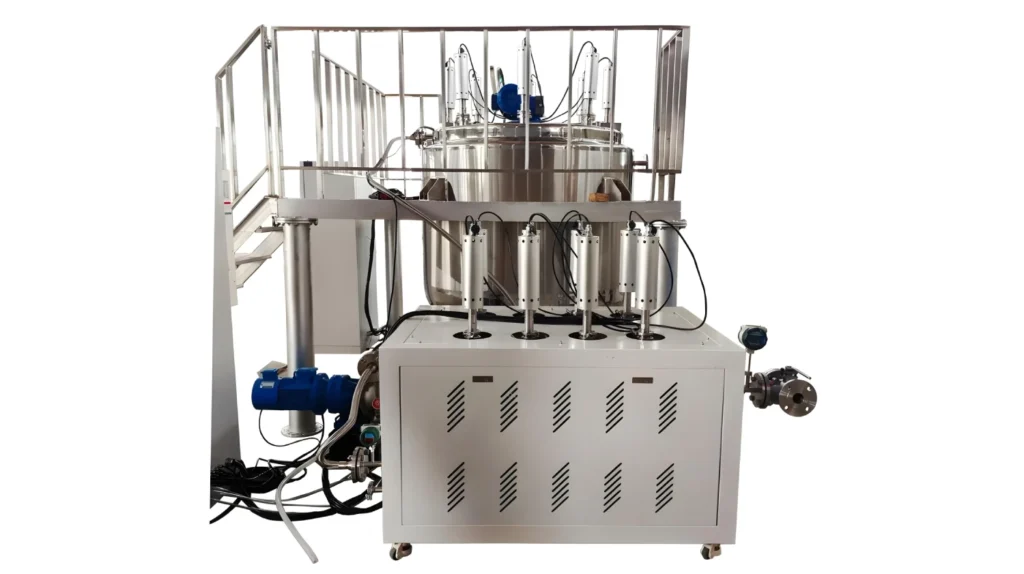
Why is ultrasonic cleaning superior to traditional chemical and mechanical methods?
Food facility hygiene requirements demand processing equipment and environmental surfaces maintain stringent cleanliness standards throughout production cycles. Traditional cleaning methods, including high-pressure washing, chemical sanitizers, and manual scrubbing, often struggle to remove stubborn residues from complex equipment geometries and microscopic surface irregularities.
Chemical cleaning methods rely on harsh detergents and sanitizers that can leave residues, require extensive rinsing, and pose environmental concerns. Manual cleaning methods are labor-intensive, inconsistent, and often fail to reach all surface areas effectively. High-pressure washing, while effective for visible contaminants, cannot penetrate microscopic crevices where bacteria and biofilms commonly establish.
How does ultrasonic cleaning work?
Ultrasonic cleaning operates through the same cavitation principles used in food processing. High-frequency sound waves create microscopic bubbles in cleaning solutions that implode near contaminated surfaces. These implosions generate powerful micro-jets and shock waves that dislodge contaminants from surface irregularities and microscopic crevices that traditional cleaning methods cannot effectively reach.
The cavitation process creates cleaning forces that are:
- Microscopic yet powerful: Reaching areas inaccessible to brushes or high-pressure water.
- Consistent: Providing uniform cleaning across all exposed surfaces.
- Gentle: Preventing damage to delicate equipment components.
- Efficient: Reducing cleaning time and chemical requirements.
Comprehensive cleaning applications:
- Complex equipment geometries: Effective cleaning of intricate parts, valves, and fittings.
- Heat exchanger cleaning: Removal of mineral deposits and organic fouling.
- Conveyor belt sanitization: Elimination of biofilms and persistent residues.
- Tank and vessel cleaning: Thorough cleaning of storage and processing vessels.
- Filter and screen maintenance: Restoration of filtration equipment performance.
Impressive sanitization results:
- Reduces bacterial populations on equipment surfaces.
- Requires fewer cleaning chemicals.
- Effectively cleans complex equipment geometries.
- Improves food safety outcomes while reducing operational costs.
- Uses less water during cleaning cycles.
- Enables faster turnaround between production runs.
7. Energy Efficiency and Sustainability: The Green Processing Solution
How do sustainability considerations influence technology adoption?
Modern food processing companies face increasing pressure to reduce environmental impact while maintaining operational efficiency and product quality. Traditional processing methods often require substantial energy inputs, generate significant waste streams, and rely on energy-intensive thermal treatments that contribute to carbon emissions.
Sustainability considerations increasingly influence food processing technology adoption decisions because companies must balance economic performance with environmental responsibility. Energy-efficient ultrasonic processors demonstrate exceptional energy efficiency through targeted energy application, which focuses acoustic energy precisely where needed rather than heating entire product masses. This targeted approach, combined with reduced processing time requirements, results in dramatically lower overall energy consumption.
How does ultrasonic processing achieve superior energy efficiency?
Ultrasonic processing achieves superior energy efficiency through several mechanisms:
- Targeted energy delivery: Acoustic energy is applied directly to specific food components requiring modification.
- Reduced processing times: Shorter processing cycles minimize overall energy consumption.
- Ambient temperature operation: Eliminates energy required for heating and cooling cycles.
- Enhanced process effectiveness: Higher yields and better quality reduce energy waste.
Environmental impact benefits:
- Carbon footprint reduction: Ultrasonic systems reduce carbon emissions by consuming less energy than traditional cleaning methods, eliminating the need for high-temperature or high-pressure operations.
- Extended shelf life benefits: Longer-lasting products reduce transportation frequency, decrease product waste, and minimize the environmental impact of spoilage.
- Decreased packaging needs: Enhanced preservation allows for lighter packaging materials and reduced packaging volume, as products maintain quality longer with less protective packaging.
- Water consumption reduction: Ultrasonic cleaning uses significantly less water than conventional methods by relying on efficient cavitation-based cleaning and enabling reuse of cleaning solutions.
Waste minimization: Improved processing efficiency and reduced product losses through better quality control and extended shelf life.
8. Industry Innovation: Current Adoption and Case Studies
What results are leading manufacturers achieving?
Leading food manufacturers worldwide have begun integrating ultrasound technology into production facilities, reporting significant improvements in operational efficiency, product quality, and cost reduction.
Success stories across industries:
Dairy Processing
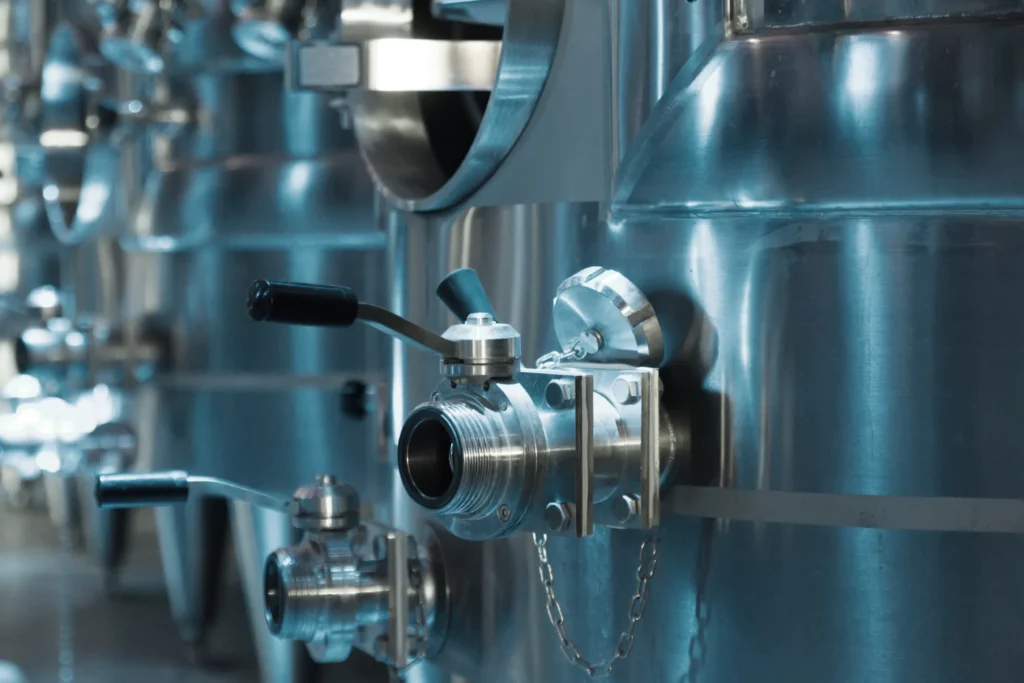
Ultrasonic homogenization is a proven non-thermal method for improving milk quality. It reduces fat globule size, enhances emulsion stability, and distributes fat more uniformly than traditional methods. This technique also lowers energy consumption and processing time, making it a sustainable and efficient solution for modern dairy production.
Meat Processing
In meat production, ultrasonic tenderization improves quality by accelerating enzymatic activity and breaking down muscle fibers. The process increases tenderness, reduces aging time, and improves marinade absorption through enhanced mass transfer and structural disruption. The result is more efficient processing and better flavor retention.
Beverage Manufacturing
Ultrasonic mixing and homogenization improve beverage consistency by reducing particle size, preventing sedimentation, and enhancing flavor stability. These techniques also accelerate processing by improving mass transfer and dispersion efficiency, making them ideal for fruit juices, dairy-based drinks, and emulsified beverages.
9. Challenges and Limitations: Navigating Implementation Hurdles
What barriers do companies face when adopting ultrasound technology?
Despite demonstrated benefits, this technology adoption faces several implementation challenges that require careful consideration and strategic planning. Understanding these obstacles enables companies to develop effective implementation strategies and realistic expectations for technology adoption.
Primary implementation challenges:
- Equipment costs: Involves higher capital investments than traditional processing equipment, requiring substantial upfront investment and careful ROI analysis.
- Scalability considerations: Technical challenges for large-scale production applications, as scaling effects can impact processing effectiveness.
- Technical expertise requirements: Complex acoustic principles requiring specialized knowledge of cavitation dynamics, frequency optimization, and process control.
- Regulatory considerations: Varying requirements across different jurisdictions and food categories, with some applications requiring specific approval processes.
- Integration challenges: Compatibility with existing production lines and quality control systems may require significant modifications.
- Maintenance requirements: Specialized maintenance protocols and replacement parts that may not be readily available through standard suppliers.
Overcoming implementation barriers:
Successful ultrasound technology adoption requires phased implementation approaches, comprehensive training programs, and partnerships with experienced technology providers. Many companies begin with pilot-scale trials to demonstrate feasibility before committing to full-scale implementation.
10. Future Horizons: The Next Decade of Ultrasonic Innovation
What technological advancements can we expect?
The next decade promises significant technological advancements that will expand ultrasonic processing capabilities and improve economic viability. Integration with artificial intelligence and machine learning systems will enable real-time process optimization, predictive maintenance, and automated quality control.
Emerging Technologies and Integration Possibilities
AI and Smart Technology Integration:
- Artificial intelligence: Transformative opportunity for automatic system optimization.
- Machine learning algorithms: Analysis of processing parameters and quality outcomes for automatic performance optimization.
- Internet of Things connectivity: Remote monitoring, predictive analytics, and seamless production management integration.
Market Predictions and Growth Projections
What does the market outlook show?
Market growth projections:
According to Future Market Insights, the food ultrasound market is expected to grow steadily over the next decade.
- 2025 market value: USD 131.9 million.
- 2035 projected value: USD 195.4 million.
- Growth rate: 5.1% CAGR over the forecast period.
- Regional leadership: North America maintains market dominance.
- US market: 4.8% projected CAGR from 2025 to 2035.

11. Conclusion: Embracing the Ultrasonic Future
Ultrasound technology in food processing extends beyond efficiency improvements to encompass fundamental transformation of food manufacturing, quality control, and sustainability. Ultrasonic systems deliver measurable benefits across energy efficiency, product quality, nutritional preservation, and environmental impact while enabling innovative product development.
The convergence of technological advancement, regulatory support, and market demand creates unprecedented opportunities for competitive advantages. Early adopters report significant returns through reduced operational costs, improved product quality, and enhanced market positioning.
Key success factors:
- Strategic planning and phased implementation.
- Investment in technical expertise and training.
- Partnerships with experienced technology providers.
- Commitment to continuous improvement.
- Integration with existing quality management systems.
Organizations embracing ultrasonic technology today position themselves as industry leaders in sustainable, high-quality food processing.
Food Buddies specializes in helping processors implement cutting-edge solutions tailored to operational requirements. Our expertise spans technology assessment, implementation planning, regulatory compliance, and optimization support.
Ready to transform your operations? Contact Food Buddies today for expert consultation on implementing ultrasonic solutions that deliver measurable results and competitive advantages.
Frequently Asked Questions (FAQs)
1. What is ultrasound technology in food processing?
Ultrasound uses low to high-frequency sound waves to enhance food processing operations such as extraction, emulsification, and preservation.
2. How does ultrasound improve food quality and safety?
It applies mechanical energy at specific frequencies to disrupt microbes, enhance texture, preserve nutrients, and reduce processing time without heat
3.What are the main applications of ultrasound in the food industry?
It is used for juice extraction, meat tenderization, homogenization, and shelf-life extension, with applications ranging from lab-scale experiments to full-scale commercial processing.
4. Is ultrasound processing environmentally friendly?
Yes, it reduces energy consumption and chemical use, making it a sustainable alternative to traditional methods.
5. Are there any limitations to using ultrasound in food processing?
Challenges include equipment cost, scalability, and the need for precise control to avoid overprocessing.

